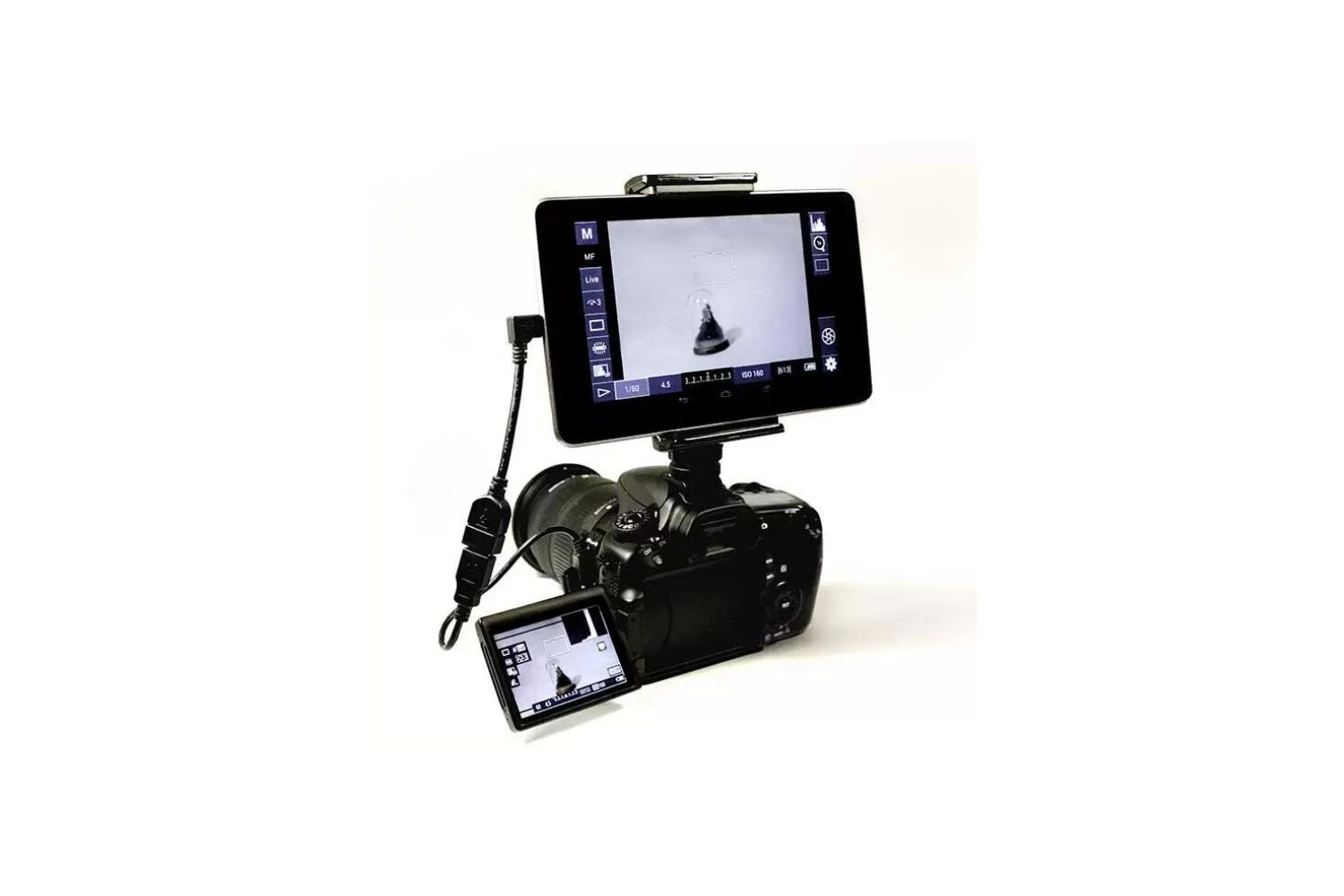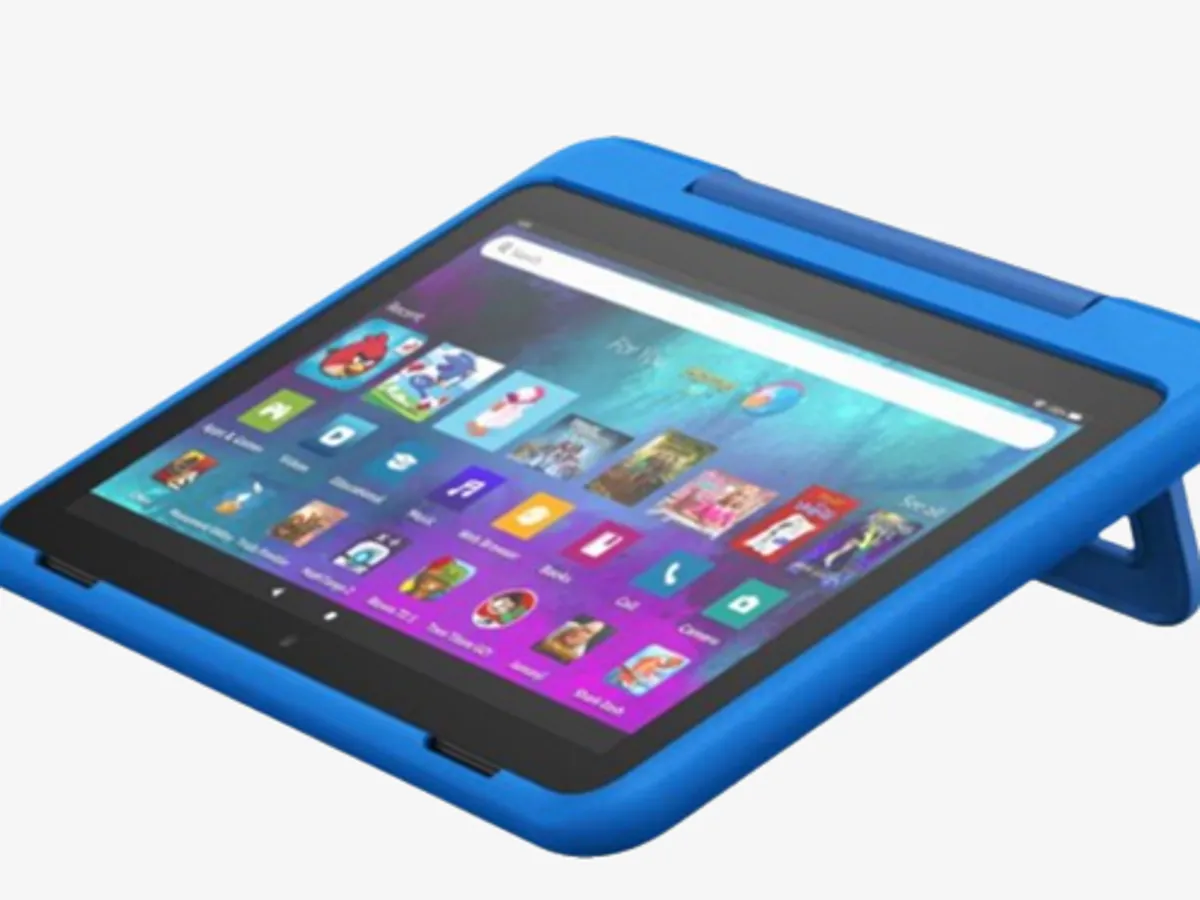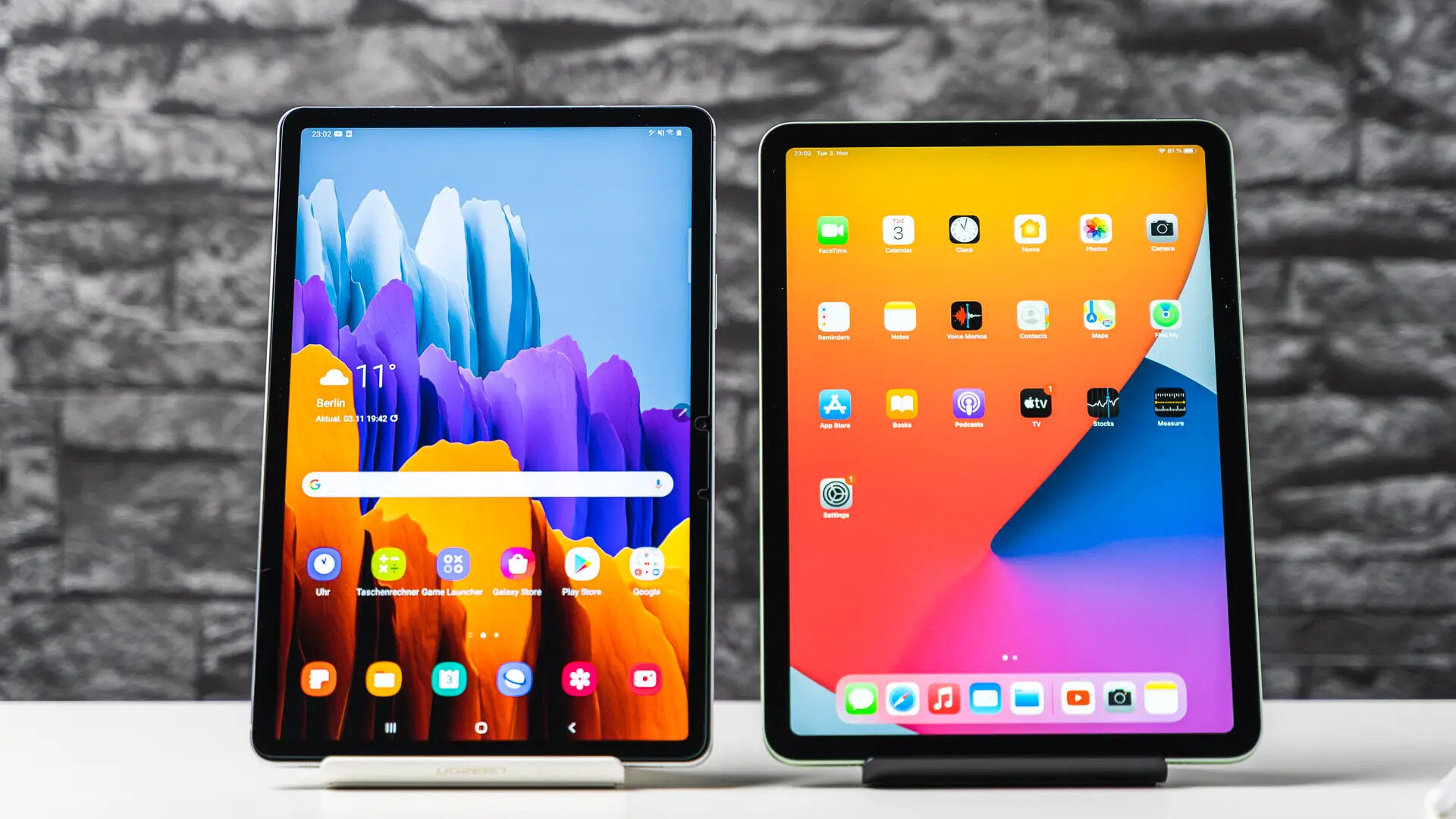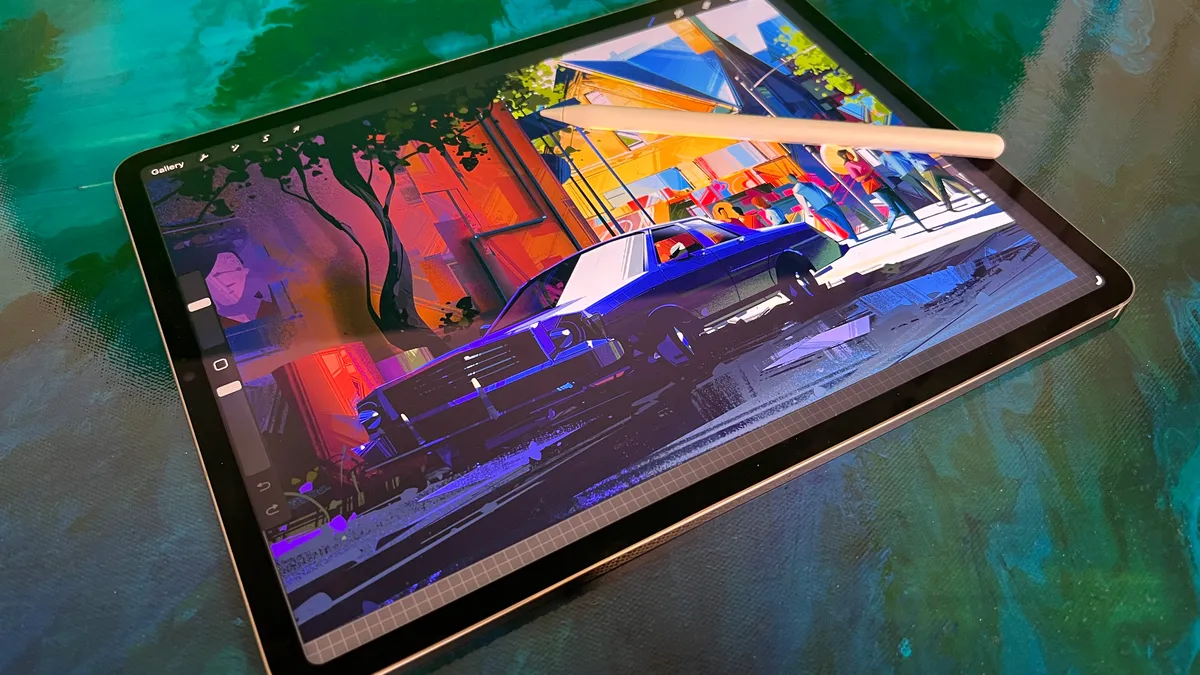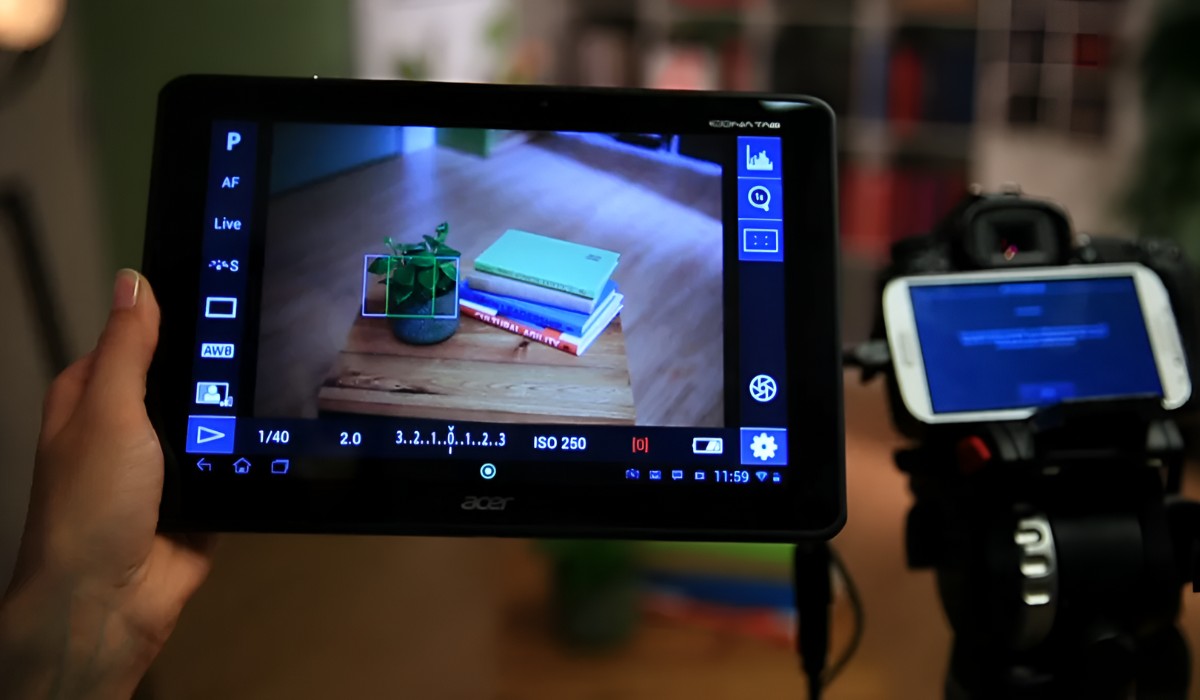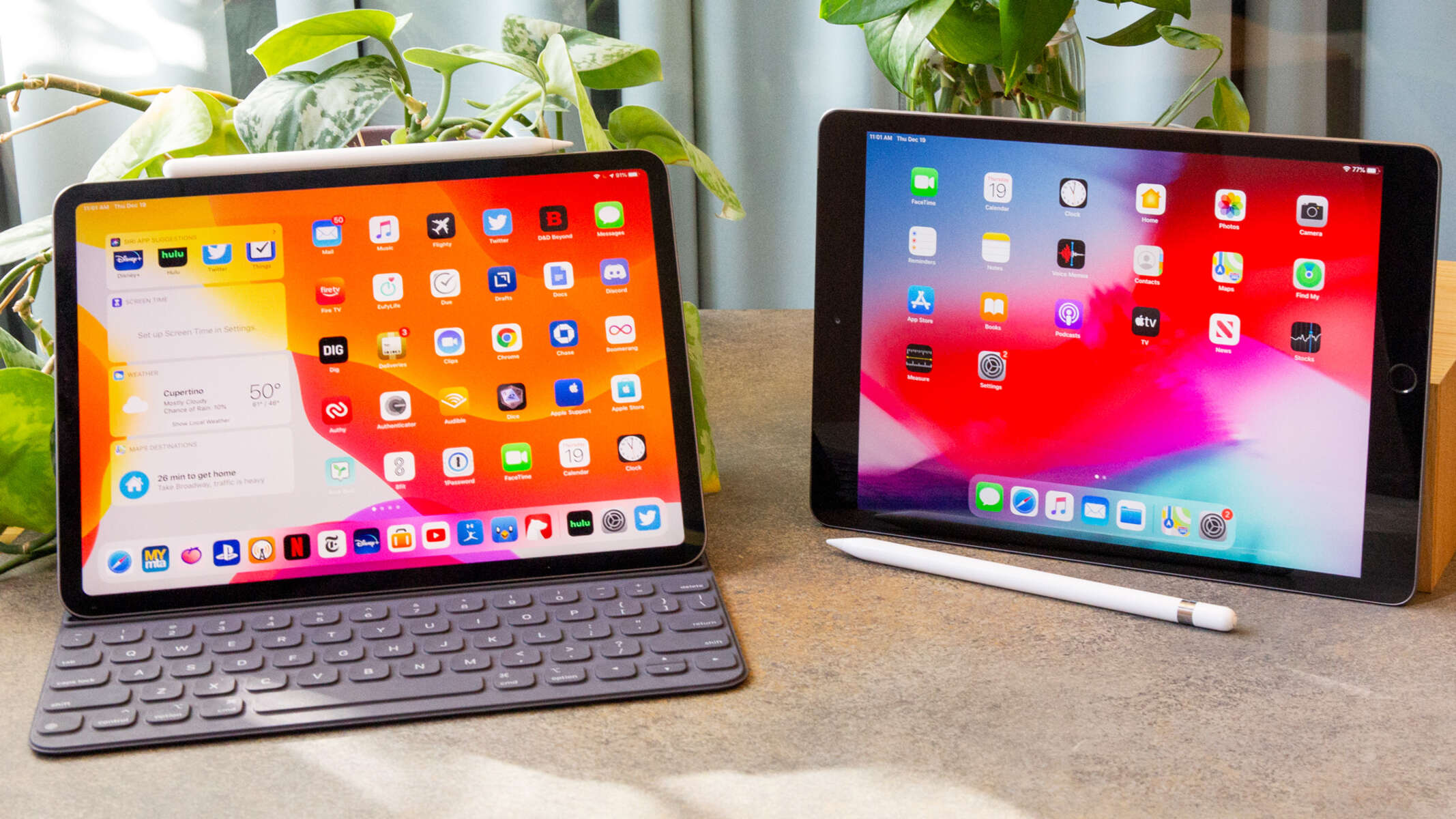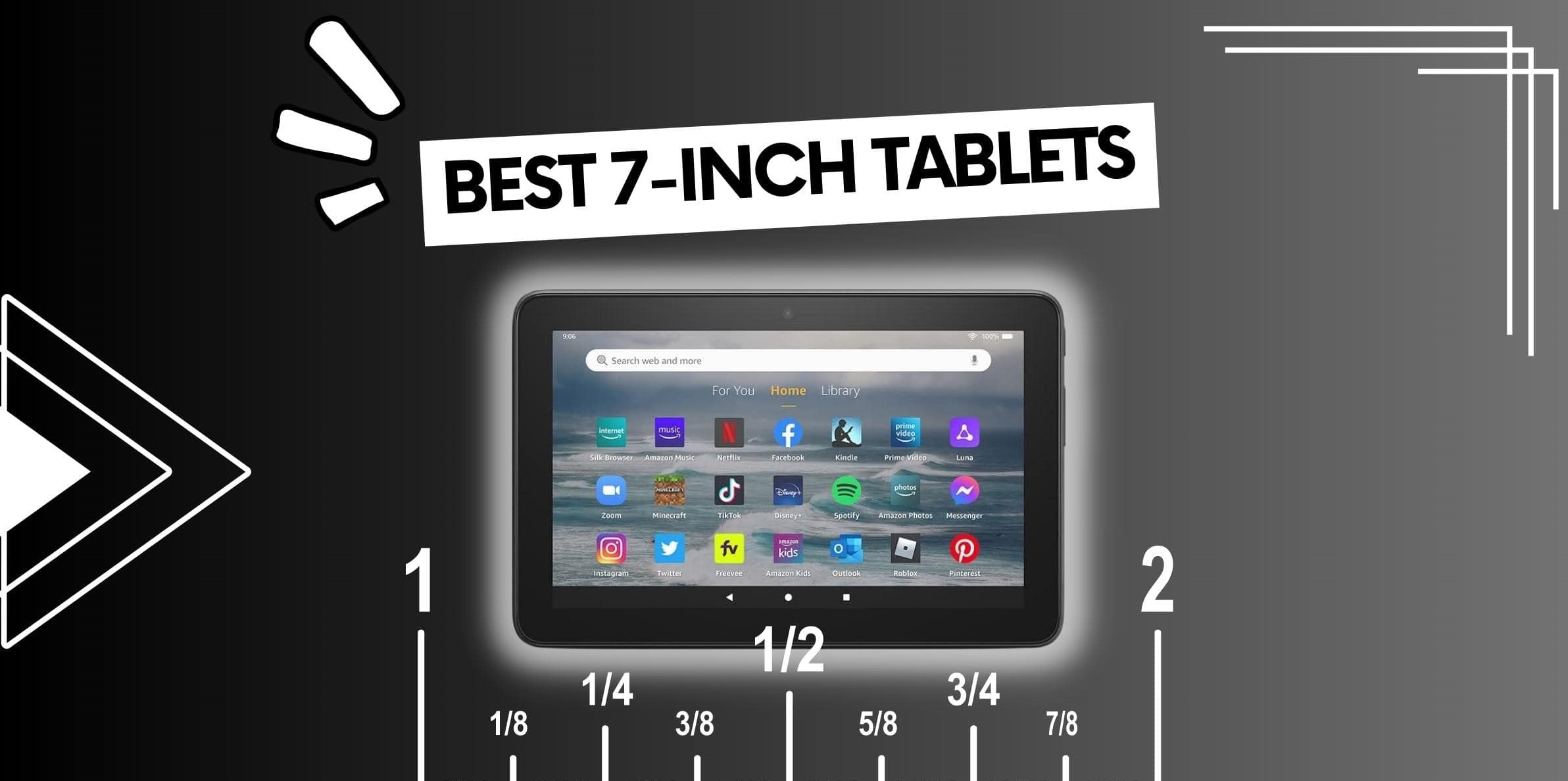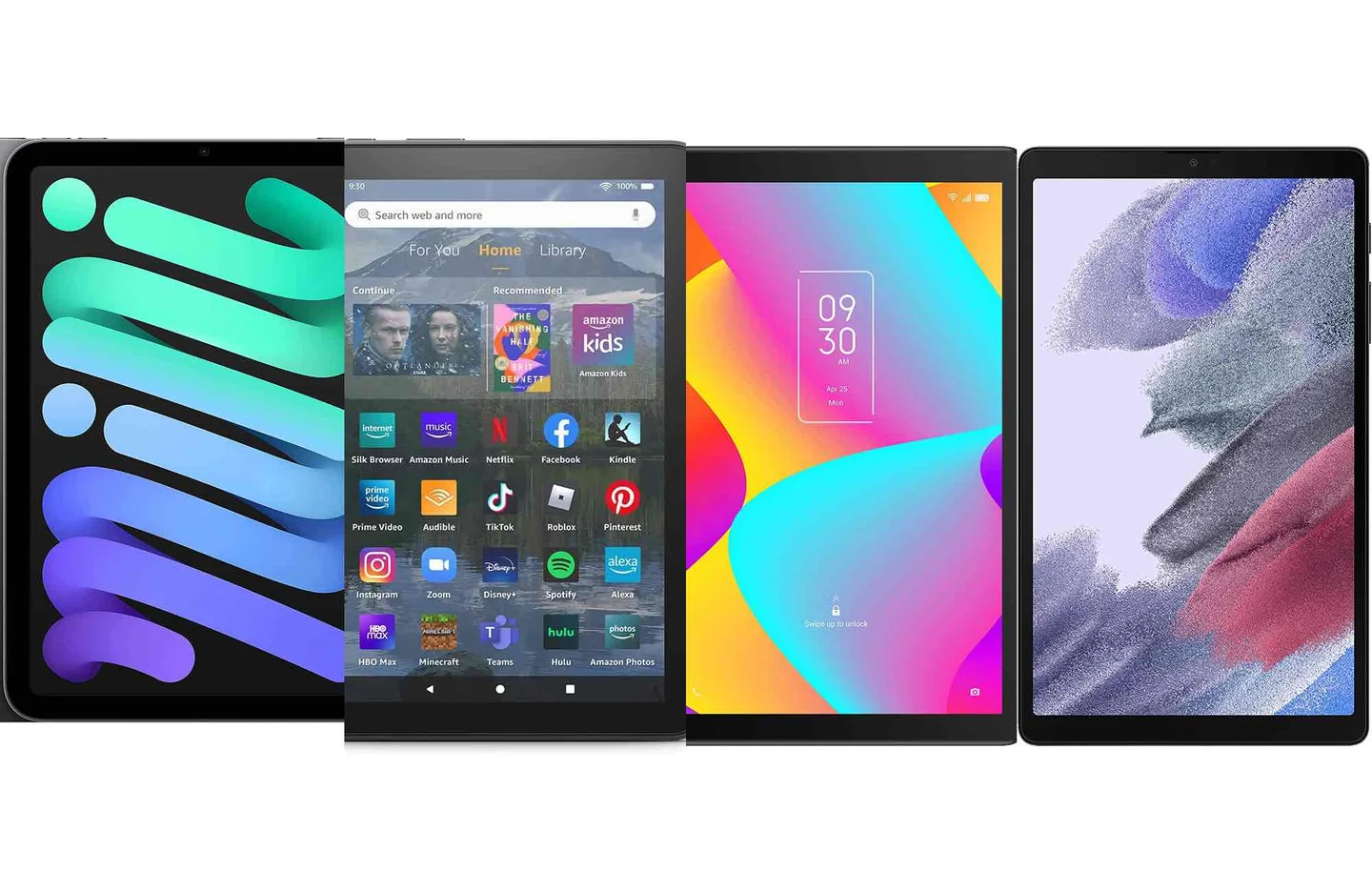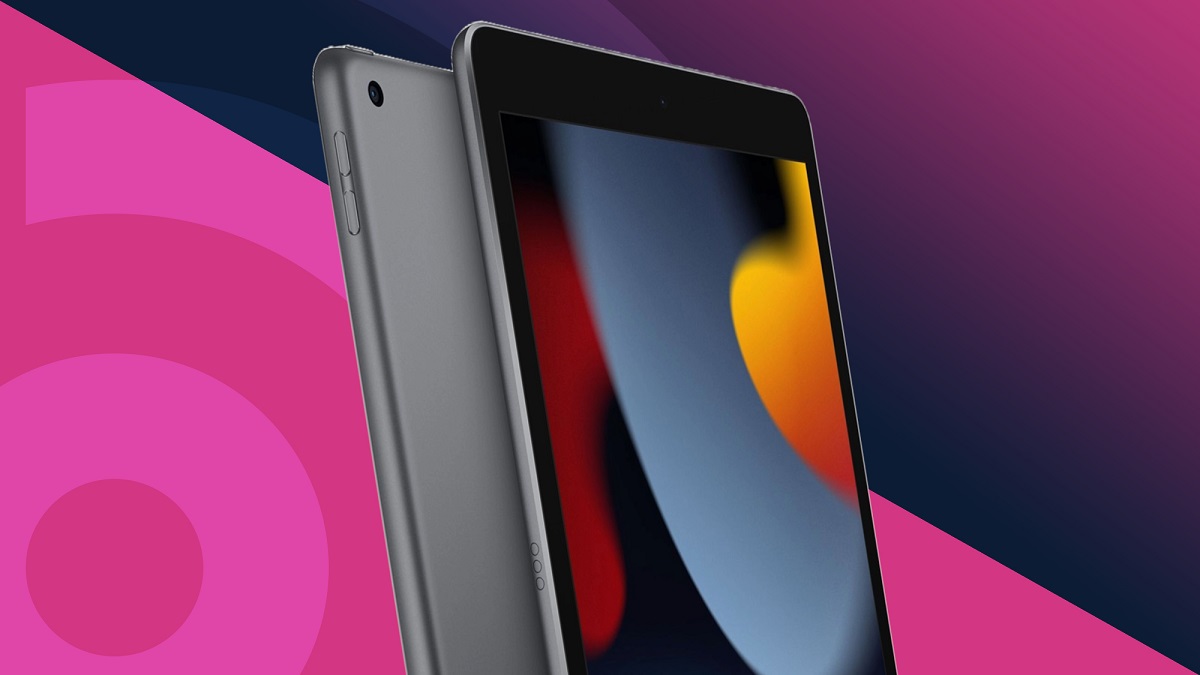Introduction
Using the camera on your Android tablet opens up a world of possibilities for capturing and preserving special moments. Whether you’re an amateur photographer or simply enjoy taking snapshots of memorable events, knowing how to maximize the potential of your tablet’s camera can greatly enhance your photography experience.
In this article, we will provide you with step-by-step instructions on how to use the camera on your Android tablet. From accessing the camera app to adjusting settings, capturing photos, recording videos, and even editing and managing your camera storage, we’ve got you covered.
Whether you’re using a Samsung Galaxy Tab, a Google Pixel Slate, or any other Android tablet, the principles discussed in this article will apply. So let’s dive in and discover how to make the most of your tablet’s camera capabilities!
Before we proceed, let’s ensure that your Android tablet is fully updated and running the latest version of the operating system. This will ensure that you have access to the latest features and enhancements offered by your device manufacturer. To check for updates, go to Settings > System > Software Update.
Additionally, keep in mind that the layout, features, and terminology of the camera app might vary slightly depending on the manufacturer and model of your Android tablet. While the core functionality remains the same, there might be slight differences in the user interface and options available.
Now that we’ve covered the basics, let’s get started by learning how to access the camera app on your Android tablet.
Section 1: Accessing the Camera App
Accessing the camera app on your Android tablet is usually as simple as tapping an icon on your home screen or app drawer. Here’s how you can quickly open the camera app:
- Locate the camera app icon on your home screen or app drawer. It typically resembles a small camera or may be labeled with “Camera”.
- Tap on the camera app icon to open the camera interface.
Alternatively, some Android tablets offer a quick shortcut to open the camera app directly from the lock screen. To use this feature, follow these steps:
- Wake up your tablet by pressing the power button or unlocking the screen.
- Swipe or drag the camera icon located at the bottom-right corner of the screen towards the center of the device to open the camera app instantly.
Once you’ve opened the camera app, you’ll be greeted with the camera interface, which displays the live viewfinder along with various icons and controls. These icons and controls allow you to customize and adjust settings to fit your photography needs.
It’s worth mentioning that some Android tablets have different camera apps pre-installed depending on the manufacturer. These apps might have additional features and functions specific to the device. However, the core functionality of accessing and using the camera remains the same across most Android tablets.
In the next section, we’ll explore the different camera settings and options available to help you fine-tune your photography experience.
Section 2: Adjusting Camera Settings
Adjusting the camera settings on your Android tablet allows you to customize your photography experience and capture the perfect shot. Here are some common camera settings you can explore:
- Resolution: The resolution determines the quality and file size of the captured photos. Higher resolutions result in sharper images but larger file sizes. To adjust the resolution, open the camera settings menu and look for the resolution option. From there, you can choose the desired resolution.
- Flash: The flash provides additional light in low-light situations. You can enable, disable, or set it to auto mode depending on the lighting conditions. The flash icon is usually displayed in the camera interface, allowing you to toggle the flash settings.
- Focus: The focus mode determines how the camera focuses on the subject. It can be set to auto mode, which automatically adjusts the focus, or manual mode, which allows you to tap on the screen to select the focus point. Look for the focus icon in the camera interface to access the focus settings.
- Exposure: The exposure settings control the amount of light captured by the camera. You can adjust the exposure compensation to make the image brighter or darker. Use the exposure slider or the +/- icons in the camera interface to fine-tune the exposure.
- White Balance: The white balance setting ensures that colors are rendered accurately. Different lighting conditions require different white balance settings. The camera app offers preset options such as auto, daylight, cloudy, and more. Explore the white balance settings to select the appropriate one for your current environment.
- Gridlines: Gridlines can help you compose your photos and ensure proper alignment. Look for the grid icon in the camera settings menu and toggle it on to overlay gridlines on the viewfinder.
These are just a few examples of the camera settings you can adjust on your Android tablet. Feel free to explore the camera settings menu to discover additional options and features specific to your device. Experimenting with different settings will allow you to capture photos that truly stand out.
In the next section, we will delve into various camera modes available on your Android tablet and how they can enhance your photography experience.
Section 3: Understanding Camera Modes
The camera modes on your Android tablet offer different shooting options and effects to help you capture unique and creative photographs. Familiarizing yourself with these modes will allow you to experiment with various styles and techniques. Let’s explore some popular camera modes:
- Auto Mode: This is the default mode in the camera app. In auto mode, the camera analyzes the scene and adjusts the settings automatically for optimal results. It’s a great mode for beginners or when you want to capture quick shots without manually adjusting settings.
- Portrait Mode: Portrait mode is ideal for capturing stunning portraits with a blurred background, also known as the “bokeh” effect. This mode focuses on the subject while blurring the background, creating a professional-looking photo. Look for the portrait mode icon, often represented by a silhouette of a person, in the camera mode options.
- Panorama Mode: Panorama mode allows you to capture wide-angle photos by panning the camera across a scene. It stitches multiple images together to create a seamless panoramic view. To use panorama mode, select the mode from the camera app and follow the on-screen instructions for capturing the images. Slowly move the camera in a steady motion to capture the entire scene.
- Night Mode: Night mode is designed for low-light photography. It optimizes the camera settings to capture brighter and clearer photos in dark environments. Night mode uses various techniques, such as longer exposure times and noise reduction, to improve image quality in challenging lighting conditions.
- Pro Mode: Pro mode, also known as manual mode, gives you full control over the camera settings. It allows you to adjust parameters such as ISO, shutter speed, white balance, and more. Pro mode is great for photographers who want complete control over the creative process and desire to experiment with advanced settings.
These are just a few examples of camera modes you may find on your Android tablet. Depending on the manufacturer and model, there might be additional modes available, such as food mode, panorama selfie mode, or slow-motion mode. Take some time to explore the camera mode options in your camera app to discover more exciting features.
Now that we’ve covered the camera modes, let’s move on to the next section, where we’ll discuss the process of capturing photos on your Android tablet.
Section 4: Capturing Photos
With your Android tablet camera ready and the settings adjusted to your liking, it’s time to start capturing photos. Here’s a step-by-step guide on how to take photos using your tablet’s camera:
- Open the camera app on your Android tablet using the methods mentioned in the previous sections.
- Hold your tablet steady and point the camera at the subject you want to capture.
- Tap the shutter button, usually represented by a circular icon or a camera icon, to capture the photo.
- For a better composition, consider using the gridlines displayed on the screen. Align your subject along the lines or at the intersection points using the rule of thirds.
- If needed, you can tap on the screen to adjust the focus point. This is especially useful when photographing subjects with different depths or when you want to emphasize a particular area.
- Review the captured photo by tapping the thumbnail image displayed in the corner of the camera screen. This allows you to quickly assess the quality and make any necessary adjustments.
- If you’re unhappy with the photo, you can delete it by selecting the delete option in the preview screen. Alternatively, if you’re satisfied with the result, you can continue capturing more photos.
- Remember to clean your tablet’s camera lens regularly. Fingerprints or dirt on the lens can affect the quality of your photos. Use a microfiber cloth or a lens cleaning solution to wipe the lens gently.
Experiment with different angles, perspectives, and compositions to add creativity and variety to your photos. Take advantage of the camera modes and settings to explore different artistic effects.
After capturing your photos, you can share them with others or transfer them to your computer for further editing. The exact process for sharing or transferring photos may vary depending on your tablet and preferred methods, such as Bluetooth, email, social media platforms, or cloud storage services.
Now that you know how to capture photos, let’s move on to the next section, where we’ll explore how to record videos using your Android tablet’s camera.
Section 5: Recording Videos
Along with capturing photos, your Android tablet’s camera allows you to record high-quality videos. Whether you want to capture special moments, create vlogs, or document an event, recording videos is a great way to capture motion and preserve memories. Here’s how you can record videos using your tablet’s camera:
- Open the camera app on your Android tablet, following the methods mentioned earlier.
- Switch the camera mode to video mode. Look for the video mode icon, usually represented by a video camera symbol or the word “video”.
- Hold your tablet steady and frame your shot. Consider factors such as lighting, composition, and stability to ensure a well-captured video.
- Tap the record button, typically represented by a red circle or a shutter button with a video icon, to start recording.
- While recording, try to keep your tablet as stable as possible to avoid shaky footage. If necessary, consider using a tripod or stabilizer mount to ensure smoother video capture.
- Press the same record button again to stop the recording when you’re finished capturing the video.
- Review the recorded video by tapping the thumbnail image displayed in the corner of the camera screen. This allows you to quickly assess the quality and make any necessary adjustments.
- Just like with photos, you can delete the recorded video if you’re not satisfied with it or continue recording more videos.
When recording videos, keep in mind the available storage space on your tablet. High-definition videos can consume a significant amount of storage, so ensure that you have enough space before starting a lengthy recording session. Consider transferring and backing up your videos to a computer or cloud storage to free up space on your tablet.
Remember to experiment with different video shooting techniques, such as panning, zooming, and adjusting focus, to add visual interest to your videos. Explore the camera settings and modes to enhance your video recording capabilities further.
Now that you know how to record videos, let’s move on to the next section, where we’ll discuss editing and enhancing the photos you captured using your Android tablet’s camera.
Section 6: Editing and Enhancing Photos
After capturing photos using your Android tablet’s camera, you might want to make further adjustments or add creative effects to enhance the final outcome. Luckily, there are several photo editing apps available on the Google Play Store that can help you accomplish this. Here are some basic editing tasks you can perform to improve your photos:
- Cropping and straightening: Use the cropping tool to remove unwanted parts of the image and improve composition. Additionally, straighten any tilted photos to make them visually appealing.
- Adjusting brightness, contrast, and saturation: Fine-tune the overall appearance of your photo by adjusting the brightness, contrast, and saturation levels. This can help make your images more vibrant and visually appealing.
- Applying filters and effects: Experiment with various filters and effects provided by the editing app to transform the mood and style of your photos. From black and white to vintage or cinematic filters, there are countless options to choose from.
- Removing blemishes and imperfections: If your photo has any unwanted blemishes or imperfections, use the healing or retouch tool to remove them. This is especially useful for portrait photography.
- Adding text and overlays: Personalize your photos by adding text, captions, or graphic overlays. This can be used for creating memes, adding context, or simply expressing your creativity.
- Applying selective edits: Most editing apps offer tools to selectively enhance specific areas of the photo. This allows you to adjust exposure, color, or sharpness in localized portions of the image.
- Saving and sharing: Once you’re satisfied with the edits, save the edited photo to your tablet’s gallery, making it easily accessible. You can also share your edited photos directly to social media platforms or send them to friends and family.
Remember, the editing process is a matter of personal preference and creativity. Don’t be afraid to explore different features and experiment with various editing techniques to make your photos stand out.
Keep in mind that the specific editing capabilities and features may vary depending on the app you choose to use. Additionally, some editing apps may offer in-app purchases or premium features for advanced editing options.
Now that you’ve learned the basics of editing and enhancing photos, let’s move on to the next section, where we’ll discuss managing camera storage on your Android tablet.
Section 7: Managing Camera Storage
As you continue to use your Android tablet’s camera, you may find that the storage space gets filled up with photos and videos. It’s important to manage your camera storage effectively to ensure you always have enough space for new captures. Here are some tips for managing camera storage on your Android tablet:
- Regularly transfer and back up your media: As a best practice, transfer your photos and videos to a computer or cloud storage on a regular basis. This not only frees up space on your tablet but also provides a backup in case of accidental loss or device failure.
- Delete unwanted media: Periodically review the photos and videos stored on your tablet and delete any duplicates, blurry shots, or images that you no longer need. This will help free up significant storage space.
- Utilize cloud storage services: Consider utilizing cloud storage services, such as Google Drive, Dropbox, or OneDrive, to automatically back up your photos and videos. This will allow you to access and manage your media across multiple devices and free up storage space on your tablet.
- Use microSD cards: If your Android tablet supports external storage, invest in a high-capacity microSD card. You can set your camera app to save photos and videos directly to the microSD card instead of internal storage, expanding the available space for your media.
- Clear cache and app data: Over time, the camera app’s cache may accumulate and take up storage space. Clearing the cache and app data for your camera app can help reclaim some storage. Head to the Settings menu, find the Apps or Applications section, locate your camera app, and select Clear Cache and Clear Data.
- Optimize settings for reduced file size: Most camera apps offer the option to adjust the image and video quality settings. Lowering the resolution and quality settings can significantly reduce file size without compromising the overall viewing experience.
- Consider using dedicated photo organizing apps: There are numerous photo organizing apps available that can help you manage and organize your photo library efficiently. These apps often have features like duplicate detection, automatic sorting, and advanced search options to streamline the storage management process.
By following these storage management tips, you can ensure that you always have enough space to capture new photos and videos without worrying about running out of storage on your Android tablet.
Now that you know how to effectively manage your camera storage, let’s move on to the next section, where we’ll discuss common camera issues and how to troubleshoot them.
Section 8: Troubleshooting Common Camera Issues
While using the camera on your Android tablet, you might encounter various issues that can hinder the photography experience. Here are some common camera issues and troubleshooting tips to help you resolve them:
- Blank or black screen: If the camera app displays a blank or black screen, restart your tablet and try opening the camera app again. If the issue persists, check if any other app is using the camera and close it. Additionally, ensure that you have sufficient storage space available.
- Slow autofocus or blurry photos: If the autofocus is slow or resulting in blurry photos, ensure that the camera lens is clean and free from any smudges or debris. Also, try tapping on the screen to manually set the focus point or enable the continuous autofocus mode in the camera settings.
- Freezing or crashing: If the camera app freezes or crashes frequently, make sure that your Android tablet’s operating system and camera app are up to date. Clear the cache and app data for the camera app, as mentioned in the storage management section, and consider restarting your tablet.
- Overexposed or underexposed photos: If your photos are consistently overexposed (too bright) or underexposed (too dark), check the exposure compensation setting in the camera app. Adjust it to the desired level to correct the exposure. You can also tap on the screen to set the focus and exposure separately.
- Noisy or grainy photos: If your photos appear noisy or grainy, especially in low-light conditions, enable the noise reduction option in the camera settings or switch to a camera mode specifically designed for low-light photography, such as night mode.
- Out-of-sync audio in videos: If the audio in your recorded videos is out of sync with the visuals, try restarting your tablet and capturing the video again. If the issue persists, it might be a hardware or software compatibility issue. Consider updating your tablet’s operating system or using a third-party video recording app.
- Camera app not opening: If the camera app refuses to open or crashes upon opening, try clearing the cache and app data for the camera app. If the issue persists, uninstall and reinstall the camera app from the Google Play Store.
If the above troubleshooting tips do not resolve the camera issues on your Android tablet, you might want to consider contacting the manufacturer’s customer support or seeking professional assistance.
Now that you’re equipped with troubleshooting strategies, you can overcome common camera issues and enjoy a smooth photography experience on your Android tablet.
Conclusion
Congratulations! You’ve learned how to make the most of your Android tablet’s camera and unlock its full potential. By mastering the art of accessing the camera app, adjusting settings, using different modes, capturing photos, recording videos, editing and enhancing photos, managing storage, and troubleshooting common issues, you’re well-equipped to take stunning photos and record memorable videos with ease.
Remember to explore the various features and settings offered by your tablet’s camera app, as it may differ slightly between different manufacturers and models. Take the time to experiment and get creative with different compositions, angles, and editing techniques to truly make your photos stand out.
Whether you’re a photography enthusiast or simply enjoy snapping pictures on the go, your Android tablet provides a convenient and versatile tool for capturing and preserving special moments. From family gatherings to breathtaking landscapes, your tablet’s camera can help you immortalize those cherished memories.
Now, go out there with confidence and start capturing the world around you through the lens of your Android tablet’s camera. Embrace your creativity, experiment with different techniques, and have fun in the process. Happy shooting!







